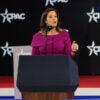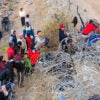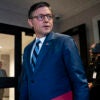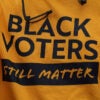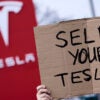Amid a global pandemic that began in their country, Chinese government officials have ramped up rhetoric to blame America for the spread of coronavirus in an unusually overt propaganda effort.
Following one Chinese government official’s tweet implying the U.S. military spread the virus, another Chinese official asserted that the U.S. was “immoral and irresponsible” in referring to the city of Wuhan as the origin of the disease.
The first known case of the coronavirus was in Wuhan, the capital of China’s Hubei province, in late 2019.
The Daily Signal depends on the support of readers like you. Donate now
“It doesn’t surprise me they would do this. If the [Chinese] government can centralize the hatred toward the U.S., it’s good for them now,” former U.S. Army intelligence officer Greg Barbaccia told The Daily Signal in an interview.
“What I am surprised about is that they think people would believe this,” Barbaccia said. “I don’t think any college-educated people in China believe this.”
In recent weeks, Chinese officials had tried to deny the virus began within their borders, while also pushing conspiracy theories on the internet.
Zhao Lijian, a spokesman and deputy director general for the information department at the Chinese Foreign Ministry, tweeted: “It might be US army who brought the epidemic to Wuhan. Be transparent! Make public your data! US owe us an explanation!”
During a press briefing Thursday, chief Chinese Foreign Ministry spokesman Geng Shuang lectured the United States, in part responding to comments the day before from White House national security adviser Robert O’Brien at The Heritage Foundation.
O’Brien said China initially “covered up” the virus and delayed a global response to the disease, which many health officials call COVID-19.
“We hope certain U.S. officials could focus on domestic response and international cooperation instead of trying to shift the blame to China by denigrating the Chinese government and people’s efforts to fight the epidemic,” Geng said, according to a transcript. “This immoral and irresponsible behavior will in no way help mitigate COVID-19 in the U.S.”
Geng said China has been “open and transparent” about the virus.
“Here we do not comment on whether the U.S. response is open and transparent, but obviously, someone in the U.S. still turns a deaf ear to international appraisal on China,” he said.
Barbaccia, whose specialty is corporate espionage and intelligence operations, said Chinese government officials are externalizing responsibility because they are economically exposed.
“They didn’t concede this was a problem earlier because they don’t think they can be seen as needing help,” Barbaccia said. “Part of their 2025 plan is that China is a world leader on every front.”
China has had about 80,000 reported cases of coronavirus and 3,177 known deaths from it, according to the website WorldoMeter. That is by far the largest national caseload in the world, which has seen about 143,000 cases and 5,400 deaths.
The United States has had 1,629 confirmed cases and 41 deaths from COVID-19 across 46 states and the District of Columbia, according to the Centers for Disease Control and Prevention.
Once the crisis is over, the events could bring long-term change in China, Barbaccia said.
“This could be a major turning point,” he said. “Now that people are dying because the government is not truthful, it could sow discord in the party, and that could be dangerous to the government.”
China’s communist government has engaged in propaganda before, but this is akin to Soviet propaganda, said James Carafano, vice president for foreign and defense policy studies at The Heritage Foundation.
“Chinese information campaigns are usually more subtle and through third parties, while the overt campaigns are usually promoting the Chinese,” Carafano told The Daily Signal. “This is something we’ve not seen a lot of from China.”
China’s “brand” has suffered on several fronts, Carafano said, which could be a motive for the rhetorical attacks on the U.S.
Still, he said he doesn’t anticipate the dust-up between the United States and China to affect ongoing trade negotiations. The two countries recently reached “phase one” of a new trade deal.
“The Trump administration lets things stay in its own lane with China, whether it’s political, economic, or military competitiveness,” Carafano said.


